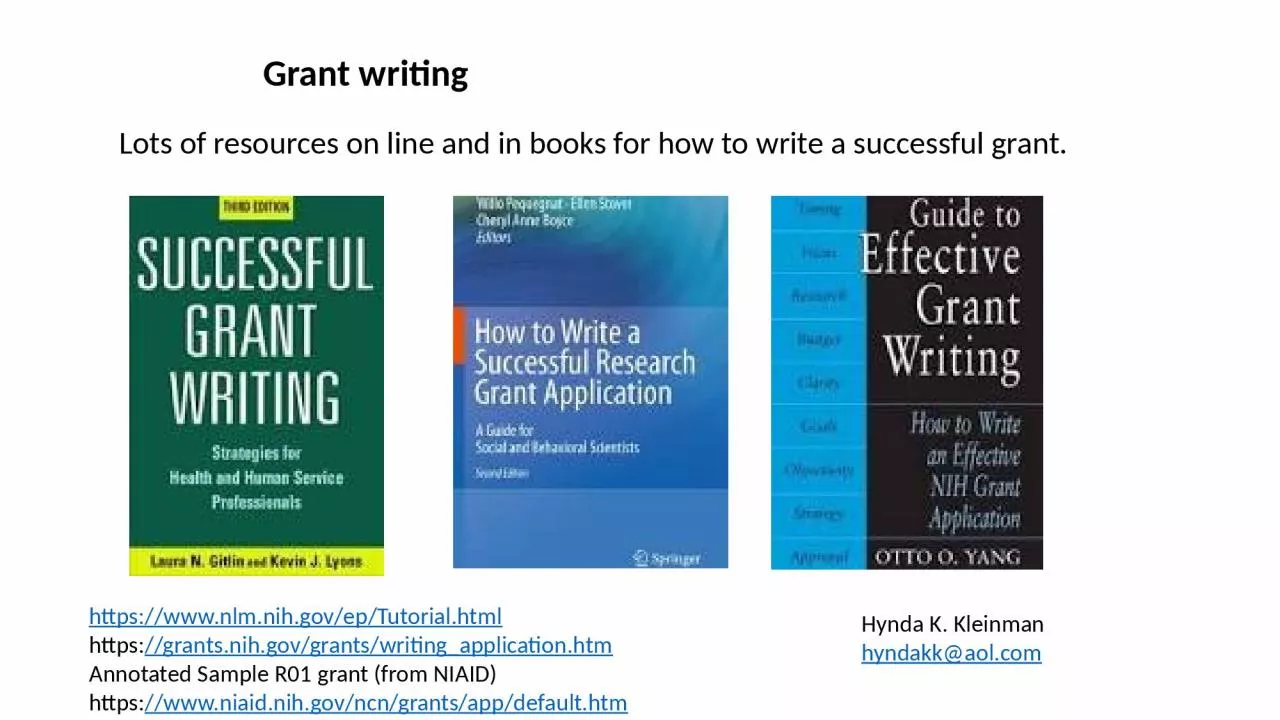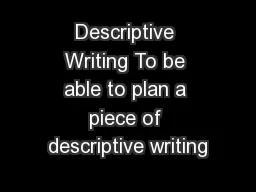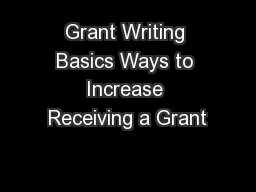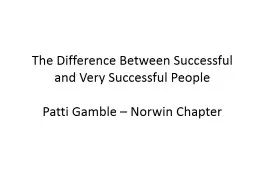PPT-Grant writing Lots of resources on line and in books for how to write a successful grant.
Author : CherryBlossom | Published Date : 2022-07-28
Hynda K Kleinman hyndakkaolcom httpswwwnlmnihgovepTutorialhtml https grantsnihgovgrantswritingapplicationhtm Annotated Sample R01 grant from NIAID https wwwniaidnihgovncngrantsappdefaulthtm
Presentation Embed Code
Download Presentation
Download Presentation The PPT/PDF document "Grant writing Lots of resources on line ..." is the property of its rightful owner. Permission is granted to download and print the materials on this website for personal, non-commercial use only, and to display it on your personal computer provided you do not modify the materials and that you retain all copyright notices contained in the materials. By downloading content from our website, you accept the terms of this agreement.
Grant writing Lots of resources on line and in books for how to write a successful grant.: Transcript
Download Rules Of Document
"Grant writing Lots of resources on line and in books for how to write a successful grant."The content belongs to its owner. You may download and print it for personal use, without modification, and keep all copyright notices. By downloading, you agree to these terms.
Related Documents






![[EPUB] - 100 Write-and-Learn Sight Word Practice Pages: Engaging Reproducible Activity](https://thumbs.docslides.com/901074/epub-100-write-and-learn-sight-word-practice-pages-engaging-reproducible-activity-pages-that-help-kids-recognize-write-and-r.jpg)
![[EBOOK] - 180 Days of Writing for Fourth Grade - An Easy-to-Use Fourth Grade Writing](https://thumbs.docslides.com/901130/ebook-180-days-of-writing-for-fourth-grade-an-easy-to-use-fourth-grade-writing-workbook-to-practice-and-improve-writing-skills.jpg)
![[DOWNLOAD] - 180 Days of Writing for Sixth Grade - An Easy-to-Use Sixth Grade Writing](https://thumbs.docslides.com/901243/download-180-days-of-writing-for-sixth-grade-an-easy-to-use-sixth-grade-writing-workbook-to-practice-and-improve-writing-skills.jpg)
![[EPUB] - 180 Days of Writing for Second Grade - An Easy-to-Use Second Grade Writing Workbook](https://thumbs.docslides.com/901424/epub-180-days-of-writing-for-second-grade-an-easy-to-use-second-grade-writing-workbook-to-practice-and-improve-writing-skills.jpg)
![[DOWNLOAD] - 180 Days of Writing for Kindergarten - An Easy-to-Use Kindergarten Writing](https://thumbs.docslides.com/901444/download-180-days-of-writing-for-kindergarten-an-easy-to-use-kindergarten-writing-workbook-to-practice-and-improve-writing-skills.jpg)
![[EBOOK] - 180 Days of Writing for First Grade - An Easy-to-Use First Grade Writing Workbook](https://thumbs.docslides.com/901798/ebook-180-days-of-writing-for-first-grade-an-easy-to-use-first-grade-writing-workbook-to-practice-and-improve-writing-skills.jpg)
![[DOWNLOAD] - Internships in Psychology: The APAGS Workbook for Writing Successful Applications](https://thumbs.docslides.com/901924/download-internships-in-psychology-the-apags-workbook-for-writing-successful-applications-and-finding-the-right-fit.jpg)
![[READ] - Internships in Psychology: The APAGS Workbook for Writing Successful Applications](https://thumbs.docslides.com/902728/read-internships-in-psychology-the-apags-workbook-for-writing-successful-applications-and-finding-the-right-fit.jpg)
![[EBOOK] - The Writing Workshop: Write More, Write Better, Be Happier in Academia](https://thumbs.docslides.com/905946/ebook-the-writing-workshop-write-more-write-better-be-happier-in-academia.jpg)